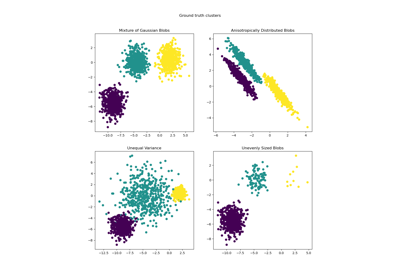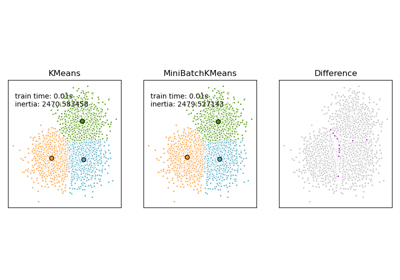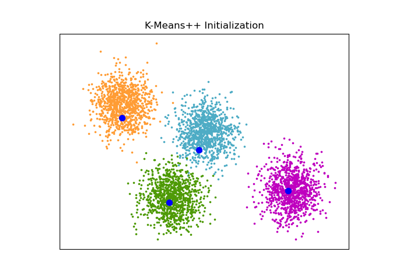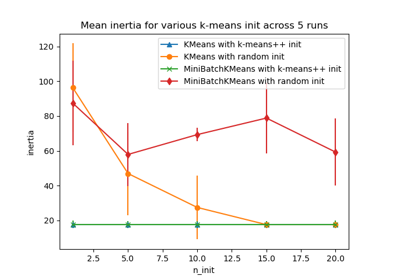注意
转到末尾以下载完整示例代码或通过 JupyterLite 或 Binder 在浏览器中运行此示例。
二分 K-均值与常规 K-均值性能比较#
此示例展示了常规 K-均值算法与二分 K-均值算法之间的差异。
虽然常规 K-均值聚类在增加 n_clusters 时会发生变化,但二分 K-均值聚类建立在先前的聚类之上。因此,它倾向于创建具有更规则的大尺度结构的聚类。这种差异可以通过视觉观察:对于所有聚类数量,二分 K-均值都有一条分割线将整个数据云一分为二,而常规 K-均值则没有。
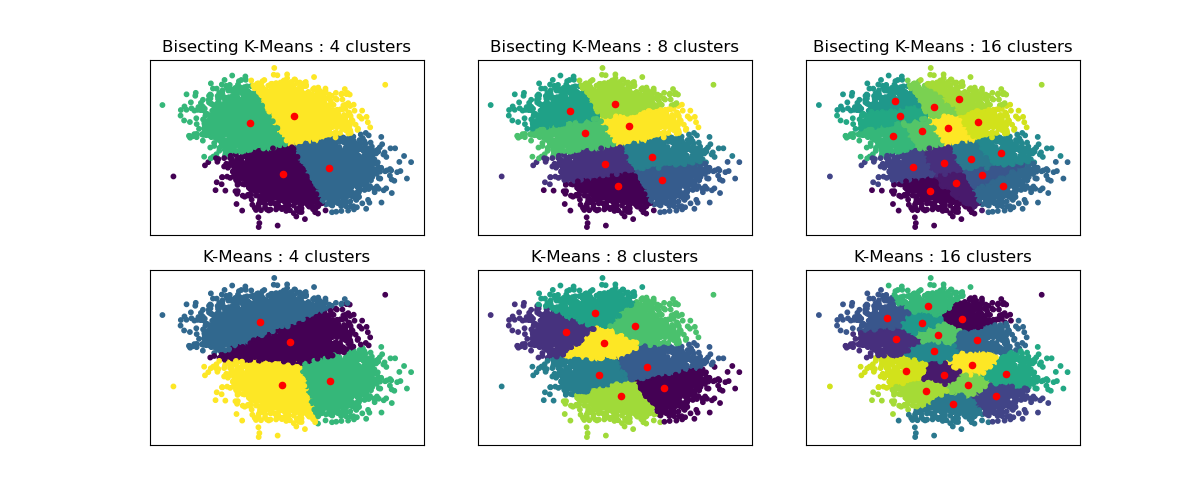
# Authors: The scikit-learn developers
# SPDX-License-Identifier: BSD-3-Clause
import matplotlib.pyplot as plt
from sklearn.cluster import BisectingKMeans, KMeans
from sklearn.datasets import make_blobs
# Generate sample data
n_samples = 10000
random_state = 0
X, _ = make_blobs(n_samples=n_samples, centers=2, random_state=random_state)
# Number of cluster centers for KMeans and BisectingKMeans
n_clusters_list = [4, 8, 16]
# Algorithms to compare
clustering_algorithms = {
"Bisecting K-Means": BisectingKMeans,
"K-Means": KMeans,
}
# Make subplots for each variant
fig, axs = plt.subplots(
len(clustering_algorithms), len(n_clusters_list), figsize=(12, 5)
)
axs = axs.T
for i, (algorithm_name, Algorithm) in enumerate(clustering_algorithms.items()):
for j, n_clusters in enumerate(n_clusters_list):
algo = Algorithm(n_clusters=n_clusters, random_state=random_state, n_init=3)
algo.fit(X)
centers = algo.cluster_centers_
axs[j, i].scatter(X[:, 0], X[:, 1], s=10, c=algo.labels_)
axs[j, i].scatter(centers[:, 0], centers[:, 1], c="r", s=20)
axs[j, i].set_title(f"{algorithm_name} : {n_clusters} clusters")
# Hide x labels and tick labels for top plots and y ticks for right plots.
for ax in axs.flat:
ax.label_outer()
ax.set_xticks([])
ax.set_yticks([])
plt.show()
脚本总运行时间: (0 minutes 1.053 seconds)
相关示例
